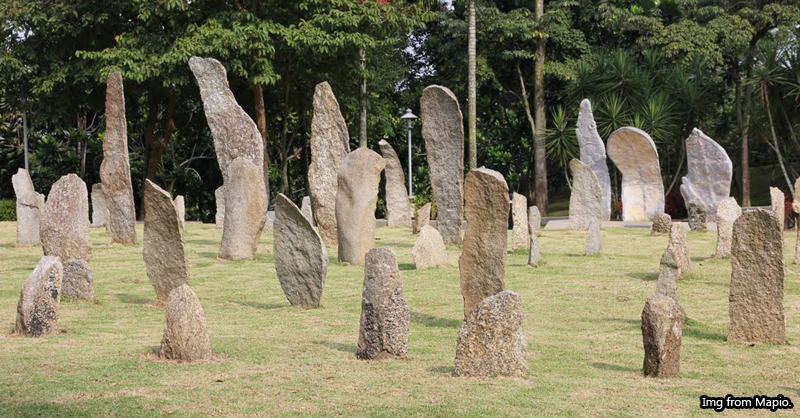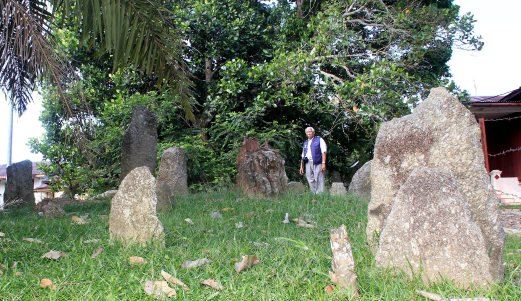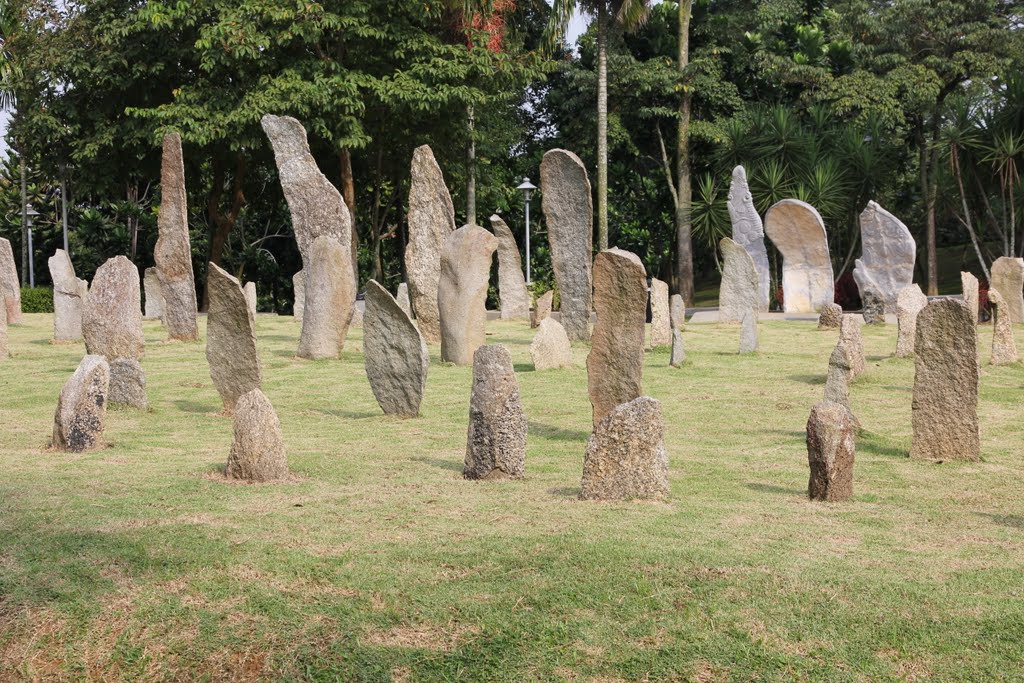These ancient Malaysian stones are also known as batu hidup… because they’re ‘alive’.

- 638Shares
- Facebook584
- Twitter6
- LinkedIn8
- Email12
- WhatsApp28
Even if you’re not into stone monuments, you’ve probably heard of the Stonehenge, either from TV, portrayals in pop culture, or perhaps from one of those generic Windows XP wallpapers.

This ancient, majestic construction can be found in Wiltshire, England, and it’s made of several megaliths (large stones), arranged by ancient angmohs in a circular pattern. But did you know that Malaysia also kind of has its own versions of the Stonehenge? And no, we’re not talking about the replica at the National Planetarium.
Malaysia’s megaliths aren’t as popular or particularly impressive like the Stonehenge, but apparently…
We have hundreds of mysterious stone sites in Malaysia

Since prehistoric times, people all over the world had been obsessed with erecting huge stones. This phenomenon is called megalith culture, and it’s sort of like a trend: in fact, some feel that it may be one of the first worldwide trends. Wherever you find old, weird, out-of-place stone formations that looks like somebody arranged it, there’s a good chance that the place had experience with megalith culture sometime in the past.
Malaysia was no exception. Based on the existence of slab-graves – a kind of megalith structure where stone slabs form a grave – with metal tools and bronze inside, it was theorized that our megalith culture started in the Bronze Age. Our stone of choice seems to be granite slabs, and unlike in Indonesia, where megalithic sites were more spread out, it seems that the culture in Malaysia was mostly confined to five states: Sabah, Sarawak, Negeri Sembilan, Malacca, and Perak.
While it’s possible to find megaliths in other states, it seems that it’s a very rare occasion, with a discovery in Johor happening as late as 2019. Due to this, the actual number of megalithic sites in Malaysia is unclear. But to give a rough idea, according to some papers, at least 81 megalith sites (not single stones) had been identified on private lands in Malacca, and more than 300 had been found in a district in Negeri Sembilan alone. The total actual number in Malaysia may be much larger.
As for what’s so special about these stones…
They’re also called ‘living stones’, because… they live

Something special about the megaliths in Malaysia is that they’re also sometimes known as ‘living stones‘ or ‘batu hidup‘, especially in Negeri Sembilan and Malacca. Here, megaliths are believed to have supernatural qualities, like growing bigger over time (hence the living part) and shimmering under the light of the moon. According to Mohd Shukry Abdullah, curator of Malacca’s Museum Corporation, there’s an explanation for the shimmering part: it had to do with the type of stone.
“The existence and belief towards megaliths came even before Islam, with the people at the time believing that the stones are alive, grows taller, and sparkles when shone a light on at night… after research was done it was found that the sparkling is due to silica contained in the granite. When the moon is full, it will shimmer,” – Mohd Shukry, translated from Berita Harian.
As for the growing taller part, well… some theorized that people believed the stones grow as they’re usually very old and big, so it makes sense that they were smaller in the past and easier to carry. After being placed where they are, they grew to their current size over the centuries. A less whimsical explanation for this would be that the soil at the base of the stones erode over time, making them appear taller.
Regardless of that bummer, these stones were indeed alive, but in another sense…
They’re alive in the communities who made them

Megaliths are a product of community, because making, lugging, and arranging huge stones is not a single man’s job. Why they do all that in the first place depends on which community’s doing it. The Kadazans of old, for example, erect megaliths for four main reasons:
- As a sort of will for those without direct heirs
- Status feasting (think kenduri after gotong royong) and bravery testing
- Funerary rites (think tombstones/altars)
- As memorials for a person, a place, or an event
It seems like mere practicality at first glance, but in most cases, megaliths have a sort of supernatural vibe surrounding them: some megaliths are believed to have souls. Menhirs (typically an ‘upright’ stone) erected to remember a dead person have been tied to ancestral worship, and over time some of them are seen as sacred totems that connect this world to the next. Some megaliths in Malacca and Negeri Sembilan are thus named with fitting names, like Datuk Nisan Tinggi, Nenek Limau, and Datuk Serban Kuning, among others.

Some farming communities hold rituals and chant spells around their village menhirs, hoping their rice would survive better and produce more. In Sabah, some megaliths are known as ‘oath stones’ (batu sumpah), a place to resolve unsolvable conflicts. Those seeking to prove their innocence or loyalty would make an oath in front of these stones, swearing that they’ll be struck with calamity if they were untruthful.
Due to the bonds formed between communities and their megaliths, it can be said that these stones gain a life of their own. However, that does lead us to the other side of the equation…
Malaysian megaliths may eventually die out one day

As mentioned before, megaliths live because of their ties to their communities, so without a community to support them, megaliths are just stones waiting to topple over and crumble.
This can be seen in Sabah and Sarawak, where megalithic sites are spread far apart from each other. A 1973 paper theorized that there might be more sites in those states in the past, but due to the nomadic nature of the communities there before colonization, many abandoned megaliths were eventually lost, eroded by the climate and overgrown by the jungle. The surviving ones are often found in settlements where people stayed for generations, due to a more organized farming system and irrigation.
Megaliths also pose a dilemma to the heritage authorities, as it’s unclear whether they’re worth preserving. Megalith sites are often scattered all over the place, with many found in privately-owned land. Besides that making it hard to take action, there’s the question on whether it’s worth the trouble to preserve these sites as tourist sites, as weird stones may not be as sexy as other attractions.
Over the years, many megalithic sites are lost to development, where the megaliths are cleared to make way for roads, housing estates, and construction in general. Some prominent ones are preserved, but who knows how many more were lost before they were even discovered. Is this a big loss? It depends on who you ask. While there might be some value in researching and preserving these strange monuments, outside of a few select communities, it seems that megaliths are all but obsolete from today’s society.
Disclaimer: This article heavily refers to two papers:
1. “Megalith Culture in Peninsular Malaysia from Sociocultural and Ethnoarcheology Perspective“, published in Jurnal Arkeologi Malaysia, Apr 2018.
2.”Megalithic Evidences in East Malaysia: an Introductory Summary“, published in the Journal of the Malaysian Branch of the Royal Asiatic Society, 1973.
- 638Shares
- Facebook584
- Twitter6
- LinkedIn8
- Email12
- WhatsApp28
